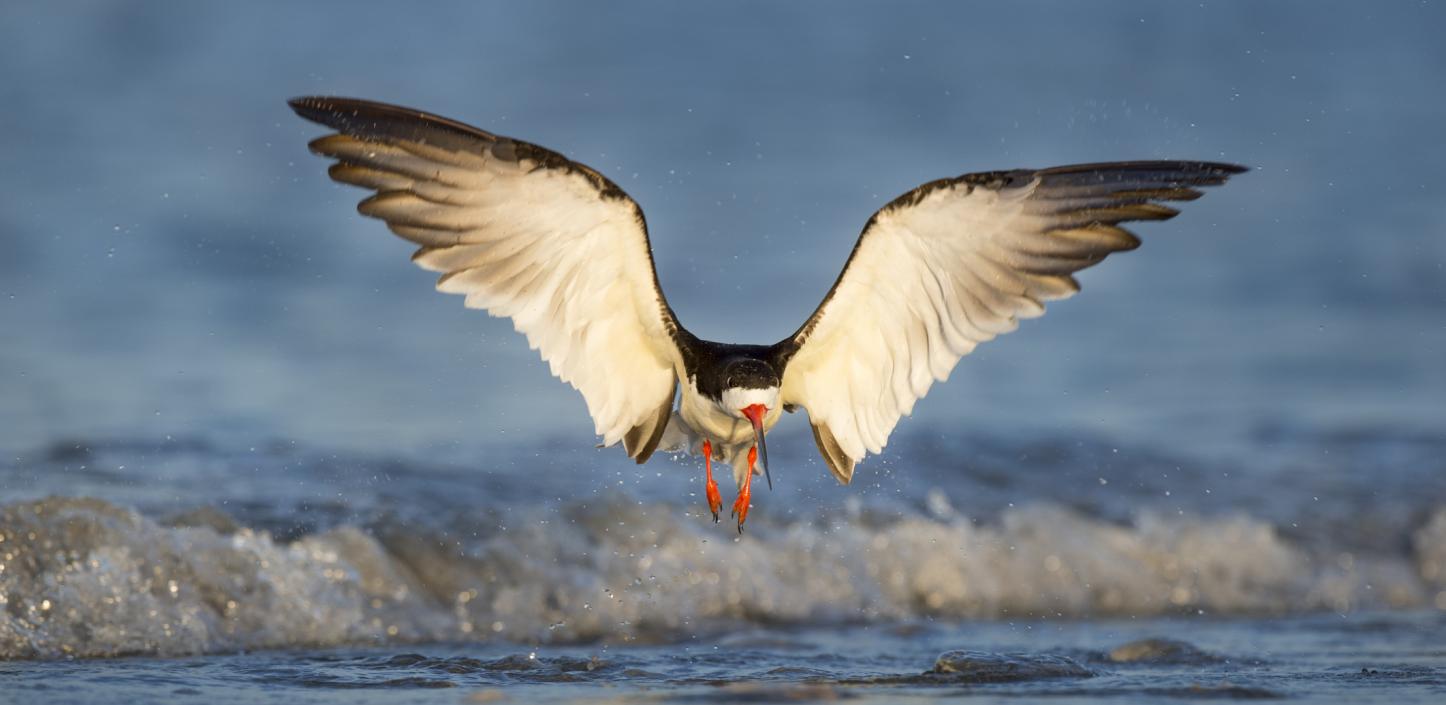
Priorities
The purpose of the Gulf Environmental Benefit Fund is to support projects that remedy harm to natural resources (habitats, species) where there has been injury to, or destruction of, loss of, or loss of use of those resources resulting from the Deepwater Horizon oil spill. Consistent with the terms of the plea agreements, funding priorities include, but are not limited to, projects that contribute significantly to the following natural resource outcomes:
-
Restore and maintain the ecological functions of landscape-scale coastal habitats, including barrier islands, beaches and coastal marshes, and ensure their viability and resilience against existing and future threats, such as sea level rise;
-
Restore and maintain the ecological integrity of priority coastal bays and estuaries; and
-
Replenish and protect living resources including oysters, red snapper and other reef fish, Gulf Coast bird populations, sea turtles and marine mammals.
Potential Actions to Benefit Natural Resources
The following list is a list of potential actions that may be supported through the Fund to advance important outcomes for each focal area. The list is not intended to be exhaustive but rather illustrative of the types of projects that may be candidates to receive funding through the Gulf Environmental Benefit Fund.This list was prepared in collaboration with state and federal resource agencies. Individual projects will be subject to additional technical, legal and financial review as well as other considerations, including cost-effectiveness. These priorities and potential actions are expected to be refined over time as conservation planning at the regional, state and local levels occurs to better inform funding decisions.
Barrier Island and Beach/Dune Habitat
-
Restore barrier islands and beaches/dunes through dedicated dredging of offshore sediments
-
Pay for the differential cost for beneficial use of dredged material from regular navigation channel maintenance activities to restore and sustain barrier island and beach/dune habitat
-
Restore dune habitat through native vegetation planting and sand-trapping fencing
-
Protect or purchase key beach habitats that expand the network of state, federal, local and private conservation areas
-
Enhance the habitat value for wildlife by taking actions to reduce human disturbance, such as utilizing fencing or educational signage, and controlling or eradicating, when possible, non-native and invasive species
Coastal Marshes
-
Implement sediment and freshwater diversions to restore and sustain coastal marsh habitat
-
Pay the differential cost for beneficial use of dredged material from regular navigation channel maintenance activities to restore and sustain eroding and subsiding marsh habitat
-
Restore coastal marsh through dedicated dredging of offshore sediments
-
Utilize living shorelines and other non-structural or structural approaches to protect vulnerable shoreline
-
Conserve marsh through land acquisition and protection of key marsh habitats that expand the network of state, federal, local and private conservation areas
-
Identify, protect through purchase or easements, and enhance land areas available to act as buffers to facilitate the natural migration of coastal marsh habitat inland in response to sea level rise
-
Control and eradicate, when possible, non-native and invasive plant species and nuisance herbivores
-
Protect and conserve strategic transitional and upland habitats necessary in the life cycles of many coastal species (e.g., shorebirds, waterfowl)
Coastal Bays and Estuaries
-
Restore and conserve (e.g., through land or easement acquisition) coastal and near-shore habitats, in particular marshes, oyster reefs, seagrasses, and coastal buffers
-
Improve freshwater inflows to priority bays to enhance or maintain the functioning of priority bays and estuaries
-
Measurably improve water quality by reducing significant non-point sources of degradation (e.g., storm water management, agricultural runoff) to enhance or maintain the functioning of priority bays and estuaries
-
Utilize living shorelines and other non-structural or structural approaches to protect vulnerable shoreline
-
Pay the differential cost for beneficial use of dredged material from regular navigation channel maintenance activities to restore and sustain eroding and subsiding marsh habitat and barrier islands
-
Control and eradicate, when possible, non-native and invasive species to enhance native wildlife and fish habitat
Coastal and Marine Living Resources
In addition to protecting and restoring important habitats listed above, populations of many coastal and marine species can be bolstered through other targeted actions:
a) Oysters
-
Restore or replenish oyster reefs
-
Promote sustainable harvest strategies
b) Gulf Coast birds (shorebirds, waterbirds, wading birds, waterfowl)
-
Reduce nest predation and human disturbance to increase reproductive success
-
Enhance food resources and habitat availability to increase overwintering success
-
Protect and restore critical colonial waterbird nesting islands
c) Red snapper and other reef fish
-
Improve data collection to inform sustainable fishing practices
-
Reduce by-catch
d) Sea turtles
-
Reduce light pollution, nest predation and other activities to increase reproductive success
-
Reduce by-catch
-
Protect strategic nesting beaches and inshore foraging areas
-
Enhance and/or expand stranding networks
e) Marine mammals
-
Identify and reduce pressures/stressors (e.g., by-catch, exposure to coastal pollutants, habitat degradation) on nearshore populations of bottlenose dolphins
-
Improve data and spatial modeling tools to alert managers to emerging environmental issues
-
Enhance and/or expand stranding networks